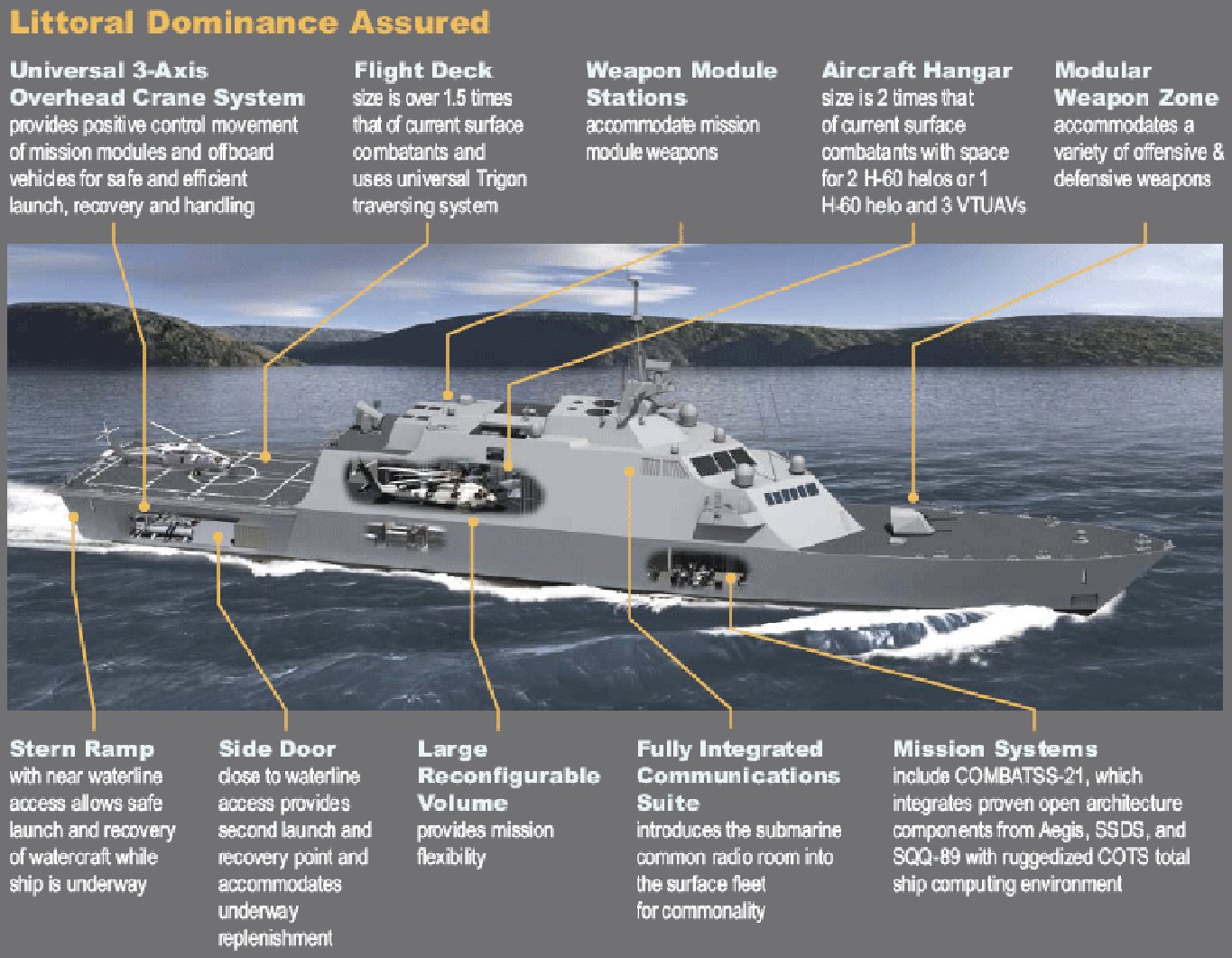John Galt’s Real Strike Chapter 5: THE US NAVY
As the needs of the US Navy are changing and the numbers of ever more expensive ships shrink to pre 1914 levels, one critical ship type the Navy decided it needed was the LCS, Littoral Combat Ship. Two designs were undertaken as as back as the late 80’s.
One design was a standard hull type. The Freedom:

The other was a Tri-Maran, the Independence:
Both ships are designed to get in close to land eliminate mines, and duke it out with shore based opposition.
Well … Fault Two… from Defense Industry Daily
Exploit simplicity, numbers, the pace of technology development in electronics and robotics, and fast reconfiguration. That was the US Navy’s idea for the low-end backbone of its future surface combatant fleet. Inspired by successful experiments like Denmark’s Standard Flex ships, the US Navy’s $35+ billion “Littoral Combat Ship” program was intended to create a new generation of affordable surface combatants that could operate in dangerous shallow and near-shore environments, while remaining affordable and capable throughout their lifetimes.It hasn’t worked that way. In practice, what the Navy wanted, the capabilities needed to perform primary naval missions, and what could be delivered for the sums available, have proven nearly irreconcilable. The LCS program has changed its fundamental acquisition plan 4 times since 2005, and canceled contracts withbothcompeting teams during this period, without escaping any of its fundamental issues. This public-access FOCUS article offer a wealth of research material, alongside looks at the LCS program’s designs, industry teams procurement plans, military controversies, budgets and contracts.
So if that’s Fault 2 what’s Fault 1, you wonder?
It cannot survive in the environment it was designed for. It cannot locate mines because the helicopter and its towed mine-hunting sonar IS TOO HEAVY FOR THE SHIPS.
Who says so?
The US NAVY:
Navy’s $670 Million Fighting Ship Is ‘Not Expected to Be Survivable,’ Pentagon Says
Here is the Congressional Research Report
And since we have not decided which design is least worst, we are building BOTH DESIGNS.
Neither of which, apparently can either taker a hit, or find a mine.
After billions.
Many billions.
- “provide For The Common Defense” Is A Lot More Than F-35′s, Va Class Subs, And Abrams Tanks
This week we have been treated to Ivan’s new Satan-2 ICBM (oversold btw) but which is to replace the SS-18′s (COLD WAR VINTAGE - which THEN could drop 10+ warheads inside a football field sized target EASILY), more intercepted nuclear attack drills...
-
As Navy Fleet Shrinks, Obama Administration Diverts Funds to $26 a Gallon Biofuels From Will at THE OTHER NEWS:OUR PRESIDENT, HERO, AND MESSIAH, THE HONORABLE BARACK OBAMA As Navy Fleet Shrinks, Obama Administration Diverts Funds to $26 a GallonBiofuels.HT: Heritage.Navy...
- Immediate, Real , Serious And Strategic Threats Still Exist
Navy orders IMMEDIATE development and deployment of electronic warfare suite for use in the Pacific to counter a NEW, DEFINED, but UNRELEASED threat.ITT Exelis to help Navy with new EW system to protect ships from recently discovered threatJuly 9, 2013WASHINGTON,...
- "we Have Less Horses And Bayonets, Too”
Barack Obama.Marines and THEIR weapon of choice.Meanwhile, what a stupid comparison.Where Romney avoided the throat however, I will not.Mr. Obama, there is a certain irreducible number of ships beneath which the US Navy cannot execute it’s...
- Us Navy Changes Tactics After The Iranian "swarm" In The Gulf
U.S. Navy upgrading Gulf capabilty after incident in Strait of Hormuz WASHINGTON -- GERTZ -The U.S. Navy seeks to bolster its fleet with new vessels that could easily maneuver in the shallow waters of the Gulf. Officials...
